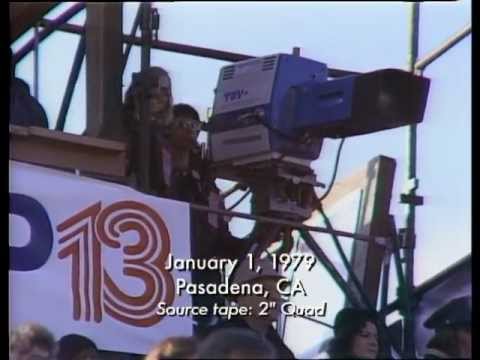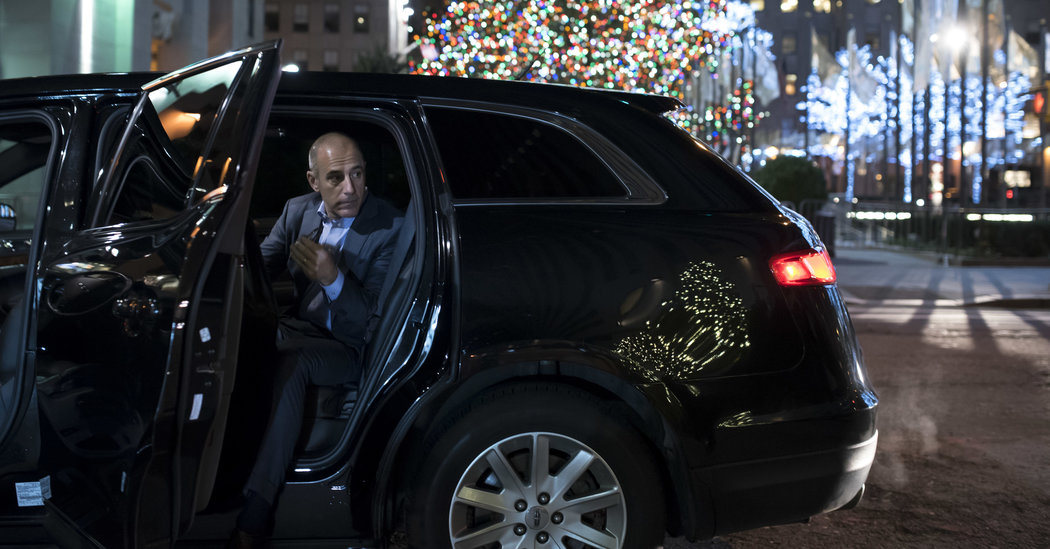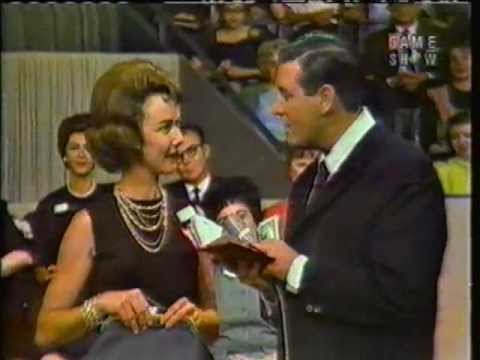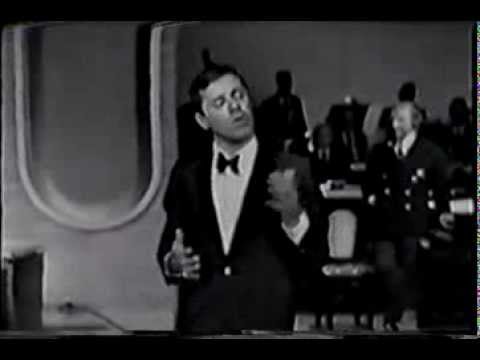

KCOP Los Angeles…Behind The Scenes Rose Parade 1979
KCOP Los Angeles…Behind The Scenes Rose Parade 1979
Using what look like Norelco PC72 cameras and some very odd camera art, we see how KCOP covered the parade. There’s also at least one familiar face which belongs to David Crosthwait of DC Video. Enjoy and remember to visit the EOAG page to see all of today’s stories…just click on the blue lettering at the top of this post. Happy New Year! -Bobby Ellerbee
#t=15″ target=”_blank”>https://www.youtube.com/watch?v=Jtd7yVKmJVs #t=15
KCOP coverage of the 1979 Tournament of Roses Parade. This is a short clip featuring the technical facilities used to get the show on the air. This excerpt w…
KTLA…Covering The Rose Parade Since 1947
KTLA…Covering The Rose Parade Since 1947
Covering the Rose Parade has been a great KTLA tradition that continues today. Bill Welsh and Dick Lane announced the first telecast in 1947.
In 1953, before videotape made such things easy, KTLA found a way to air the parade twice. They televised the parade once at the beginning and once as it neared the end. KTLA also did this with a twist starting in 1955 when they broadcast the parade in both black and white and color. The black and white unit was at the top of the parade and the color unit at the end. By the time the parade had passed the black and white cameras, it was in front of their color cameras.
Stations were extremely competitive in those years, each trying to find the best camera locations. KTLA scooped them all in 1959, having Tom Hatten ride a camera equipped station wagon (seen below) televising live pictures from the very front of the parade as it moved down Colorado Boulevard. New rules went into effect the following year-cameras were never allowed to precede again.
Also in 1959, KTLA was the first to cover the parade by helicopter. The “Telecopter” was the first ever flying television station featuring a minicam that gave viewers a remarkable overview of the festivities.
The Rose Parade came of age when color television became a reality. The first KTLA colorcast was in 1955, but NBC had done a nation wide colorcast of the parade the year before. KTLA’s colorcast was almost a washout. The skies were so gray and overcast that the temperamental new cameras had trouble reproducing the bright, vivid colors of the parade but Klaus Landbreg’s engineers were only partially successful that historic day.
There is more on the photos, so please click though them and there is more of how KTLA covers the parade for Los Angels at the link below. Enjoy, share and Happy New Year! -Bobby Ellerbee
http://www.tvnewscheck.com/article/79849/ktlas-rose-parade-heritage-keeps-growing
Pasadena…Preparing For Today’s Rose Parade
Pasadena…Preparing For The Rose Parade
The good news is, today’s weather will be a lot dryer than yesterdays…tomorrow’s too. These were taken yesterday and in the first picture, we see ABC reporting in the rain from the grandstands. From the press area, we see covered cameras and behind the stands, the trucks for ABC, NBC, KTLA, HGTV, Univision and RFD TV.
Our friend Roger Crawford is the senior video man in the ESPN/ABC truck and writes that the rehearsals take place early Thursday morning at the start line at about 4 AM. These are mostly for the opening number. The ABC booth is next to HGTV and RFD-TV. KTLA is around the corner and NBC is across the street.
Later today we should be able to see some of the many cranes, jibs and other camera platforms as well as the talent areas and, who knows what else? Maybe a peek inside the truck too! Thank you Roger! We appreciate the effort! Enjoy, share and Happy New Year! -Bobby Ellerbee
New York…Preparing For NBC’s Carson Daly Countdown Show
New York…Preparing For NBC’s Carson Daly Countdown Show
Thanks to Rob Balton, here are a couple of shots from yesterday’s rehearsal of Carson Daly’s New Year’s show from Times Square. I think that’s Rob’s jib there on the left. The truck is All Mobile Video’s “Resolution” with TD John Pretnar at the controls. The monitor shot is from John Roche. Thanks for the pix and we’ll be looking forward to seeing more later today! Enjoy, share and Happy New Year! -Bobby Ellerbee
By the way…if you are working today, send us some pix of where you are and what you are doing, especially those of you in Times Square, The Rose Parade and at bowl games.


December 31, 1965…Johnny Carson & Ben Graurer Welcome 1966
December 31, 1965…Johnny Carson & Ben Graurer Welcome 1966
As mentioned in the Guy Lombardo article just before this, NBC usually welcomed the new year with a live ‘Tonight’ show which started with Steve Allen and continued through the Paar years and into Johnny Carson’s tenure.
I think Ben Grauer was the Times Square reporter every year for ‘Tonight’ until Carson moved the show to Los Angeles in 1972. Here, as 1965 passes into history, Ben is at his best with a remarkable billboard of the biggest stories of the year and it was straight off the top of his head. Enjoy, share and Happy New Year! -Bobby Ellerbee
http://youtu.be/Tus0p8vkZUYAS IT SAIDS, 1966 NEW YEARS EVE IN NEW YORK CITY FROMT THE TONIGHT SHOW STARRING JOHNNY CARSON (GREAT MAN) P.S. YOU NOTICE THE BALL HE SAIDS IS ON TOP OF THE…


The Final Guy Lombardo New Year With Ben Grauer Reporting Live
The Final Guy Lombardo New Year With Ben Grauer Reporting Live
By the next new year, both Guy and Ben would have passed away, but this was the night of December 31, 1976. Below is some history on the Lombardo broadcast years and some things about Ben Grauer that you may never have known.
The band’s first New Year’s Eve radio broadcast was in 1928; within a few years, they were heard live on the CBS Radio Network before midnight Eastern Time, then on the NBC Radio Network after midnight.
On December 31, 1956, the Lombardo band did their first New Year’s TV special on CBS; the program (and Lombardo’s 20 subsequent New Year’s Eve TV shows) included a live segment from Times Square that during the early years were hosed by pioneer broadcast journalist Robert Trout . In later years, another longtime newsman, Ben Grauer, reported from Times Square, though Grauer worked for NBC.
Grauer’s greatest fame lies in his legendary 40-year career in radio. In 1930, the 22-year-old Benjamin Franklin Grauer joined the staff at NBC. He quickly rose through the ranks to become a senior commentator and reporter. He was the designated announcer for the popular 1940s ‘Walter Winchell’s Jergens Journal’. Perhaps, most importantly, he was selected by Arturo Toscanini to become the voice of the NBC Symphony Orchestra. Grauer took over as announcer in 1940 and remained until the orchestra was disbanded in June 1954. Toscanini said he was his favorite announcer.
Starting in 1932, Grauer covered the Olympic Games, presidential inaugurations and international events. During his radio career, Grauer covered nearly every major historic event, including the Morro Castle fire, the Paris Peace Conference and the US occupation of Japan.
Millions remember his NBC coverage of the New Year’s celebrations on both radio and TV. Between 1951 and 1969, Grauer covered these events 11 times live from New York’s Times Square. He continued covering New Year’s Eve for Guy Lombardo’s New Year’s Eve specials on CBS in the 1970s, with his last appearance on December 31, 1976, the year before both he and Lombardo died.
From the mid-1950s until the mid-1960s, Grauer’s reports were part of the ‘Tonight’ show, where he worked with Johnny Carson and prior to that, Jack Paar, and Steve Allen. Grauer was also one of NBC Radio’s Monitor “Communicators” from 1955 to 1960.
Grauer provided the commentary for NBC’s first television special, the opening in 1939 of the New York World’s Fair. In 1948, Grauer, working with anchor John Cameron Swayze, provided the first extensive live network TV coverage of the national political conventions.
In 1954, NBC began broadcasting some of their shows in living color, and in 1957, the animated Peacock logo made its debut. It was Grauer who first spoke the now famous words, “The following program is brought to you in living color on NBC,” behind the Peacock graphic. Enjoy, share and Happy New Year! -Bobby Ellerbee
http://www.youtube.com/watch?v=oBD1yHHgaEk
From Dec. 31, 1976, here is the CBS coverage of New Years Eve at Times Square with Ben Grauer (who passed away a few months later) and Guy Lombardo, who also…
The Rose Parade…A Uniquely American Tradition And Color Spectacular
The Rose Parade…A Uniquely American Tradition And Color Spectacular
First, if you are working Times Square, Bowl Games or other holiday shows, please remember to send us some pictures via a Facebook message to me or send them to edition4@comcast.net.
I just heard from our friend Roger Crawford, senior video for ESPN/ABC. He and the other network mobile units are at Orange Grove and Colorado in Pasadena. Roger is going to get us some pictures of one of the most amazing parades in the world and how it’s covered. Of course the parade itself is January 1 but we hope to see some rehearsal and set up pix tomorrow.
Below, we see two color shots from 1961 and 1959. The original NBC Color mobile units did their first ever broadcast from here January 1, 1954 and we see them here in a Los Angeles publicity shot. The final photo is a screen shot taken in 1940 when Don Lee’s W6XAO did the first ever television broadcast to some 200 set owners in LA. Enjoy and share! -Bobby Ellerbee
The Three Headed Monster From ‘I Love Lucy’ UPDATE:
Picture Parade #5…The Three Headed Monster From ‘I Love Lucy’
UPDATE: Daniel Cahn, son of Lucy editor Dann Cahn, has added new information and photos in the comments section! Be sure to see this.
One of the first obstacles to overcome on ‘I Love Lucy’ was how to edit the show. Pictured here is editor Dann Cahn (jacket) and Bud Molin with the custom machine originally built for ‘Burns And Allen’. Below is part of a Motion Picture Editors Guild article describing a typical week. Many thanks to Daniel Cahn for the extended remarks and photos in the comments section. He is the son of Dann Cahn and a third generation editor.
The schedule was tight, Cahn related, especially compared to the more familiar pace of feature film editing. A new episode had a table read on Monday, rehearsal on Tuesday, camera rehearsal on Wednesday, and a full camera run-through on Thursday. On Friday evening in front of a live audience, the episode was filmed, in scripted scene order; the film was processed, printed, and in the cutting room on Monday morning usually by eight AM. Dann marked with a grease pencil, Bud made the cuts (with scissors) and pasted; cut scenes were then adjusted and fixed. The editor’s cut was ready to screen with the director by the time rehearsals for the next episode were already under way. Very quickly, due to demands on set, and with Cahn’s natural ability at cutting comedy and working fast, the director’s cut dissipated. A pattern of six-day work weeks and 14-hour days was unavoidably established.
In the context of the high-pressure schedule, he recalled, “They thought that the Monster would enable me to do everything, but it was just a tool, like the Avid is today; we couldn’t do everything within the time constraints! It’s expected today that picture editors do temp sound and music work.” The crew quickly increased to include an apprentice and an additional editor for sound effects and music. Dann remembered Desi’s remark to him, “Danny you want a crew bigger than my band? But that that’s exactly what eventually happened as Desilu expanded its productions as well as Cahn’s role in the company.
Inevitably, just as the workload seemed more manageable with his expanded crew working on the first episode, it was decided that the second episode would air first. The reaction to the second episode was so strong, the sponsor and CBS decided to the switch the air dates. The six-day editorial work week immediately shifted to seven days, and within four weeks all the editing and sound work, opticals, negative cutting and answer print was completed and delivered within hours of airtime. In addition to these unforeseen shakeups, Cahn also had to think creatively and act fast, especially when things didn’t run as smoothly as planned.
The first serious technical issue the editing team confronted was one still familiar to assistant editors today; fixing out of sync dailies. The three-camera setup used a “blue light” system instead of the traditional clapper; as the camera rolled at the start of a scene, all the film rolls were buzzed and flashed with a light that was exposed onto a frame of film and soundtrack. The three-camera setup was interlocked so that the flash would occur on all three cameras simultaneously. However, the flash from the three different cameras never actually wound up in the same place, as intended, so the task of eye synching most of the footage was added to the crunched schedule. After the first few shows, Cahn decided to go to the studio mill and make a giant sized wooden clapper that would cover all three cameras, and the sync problem was resolved. He then recalled Karl Freund’s wisecrack to Jess Oppenheimer, “We’ve got a bright boy here; with this giant clapper he’s reinvented the wheel!”
I asked Dann about music cues and how that developed. “Director Marc Daniels’ experience was in live theater, and that kind of spontaneity was great for the show, but not to get the music cues I needed for a cut,” he explained. I’d get music with dailies, but they were never the right length and nothing ever matched. So to get around this, I’d cut the episode and take the timings to the set on Friday, just like we did in features; the band was set up, and I’d give them my list of cues to record. They had to learn that not everything could happen all at once in the cutting room; it wasn’t like live TV or theater. The show had to be scored just like a movie and I was always adapting motion picture techniques to everything we did!”
Can You Spot The Hidden Camera Portal?
Picture Parade #4…Let’s Play This ‘Match Game’ Style OK?
The square behind Lucy’s right shoulder is a _________________.
Enjoy and share! -Bobby Ellerbee
The First Electronic Color Cameras, 1949
Picture Parade #3…The First Electronic Color Cameras, 1949
In the large picture, we see RCA’s lead color engineer Richard C. Webb with one of the cameras with the housing off. I think the center channel is green with red on the right and blue on the left. Notice the dichroic mirrors are in front of the lenses.
In the next photos, we see some of the constant early testing and a photo of the monitor. These two shots are from NBC Studio 3H where testing moved around 1950. The final photo is from the original color test facility in Washington DC at the Wardham Park Hotel studio. Enjoy and share! -Bobby Ellerbee
Classic Jackie Gleason
Picture Parade #2…Classic Jackie Gleason
This is early afternoon, Saturday February 5, 1955. Camera blocking is still going on and CBS veteran Pat McBride is just behind Jackie. This is Studio 50, or what we now call The Ed Sullivan Theater, although Gleason was the first big show from here.
This is the variety show in rehearsal for that night’s broadcast which would include a Honeymooners sketch called “Cupid”. In the sketch, Ralph tries to help out a lonely old friend by setting him up with a blind date, but the gossip grapevine leads Alice to believe that Ralph is trying to land dates for himself. Enjoy and share! -Bobby Ellerbee
WCBW TV, New York, 1946
Picture Parade #1…WCBW TV, New York, 1946
This is a rare picture of the RCA A500 Iconoscope cameras at CBS Grand Central Terminal, but this is not a network show and it may surprise you to know that there was no CBS Television Network till 1948. This looks like a game show, but what ever it is is local. Only Dumont and NBC had television networks at this point.
By the way, these early pedestals had electric motors in the base to raise and lower them and the cable went down inside the lift column to keep it out of the way. Enjoy and share! -Bobby Ellerbee


Just For Fun…Charlie Chaplin Blooper And Outtake Reel
Just For Fun…Charlie Chaplin Blooper And Outtake Reel
Did you know that one of Chaplin’s first jobs for Max Sennett was as a Keystone Cop? I’ll have that story in today’s next post. Did you know that along with D W Griffith, Mary Pickford and Douglas Fairbanks, that Chaplin was one of the founders of United Artists? Enjoy and share! -Bobby Ellerbee
#t=80″ target=”_blank”>https://www.youtube.com/watch?v=2A_xERLt-2U #t=80
Chaplin was a perfectionist, but he wasn’t always perfect. Check out these bloopers or outtakes from the sets of his films.


The Early Shift: Behind the Scenes of ‘Today,’ ‘This Morning’ and ‘Good Morning America’
Behind The Scenes Of The Morning Shows…ABC, CBS And NBC
Thanks to The New York Times, here is a rare and interesting 24 shot slide show of the early morning preparations for the casts of the three big network morning shows. Enjoy and share! -Bobby Ellerbee
The Early Shift: Behind the Scenes of ‘Today,’ ‘This Morning’ and ‘Good Morning America’
In the dark hours of the morning, some of television’s biggest celebrities are already rolling out into the streets of the city that never sleeps.


December 30, 1963…’Let’s Make A Deal’ Debuts On NBC
December 30, 1963…’Let’s Make A Deal’ Debuts On NBC
Here is the pilot, complete with a TK41 in the foreground of the intro shot at NBC Burbank May 25, 1963. The original edition of the show was a daytime series that ran on NBC, but moved to ABC in 1968 where it ran until 1976. A weekly nighttime syndicated edition of the show was broadcast from 1971 to 1977. Enjoy and share! -Bobby Ellerbee
http://www.youtube.com/watch?v=pvNXm_5kLmo
This 37 minute pilot, produced on May 25, 1963 with Monty Hall as host and Wendell Niles as announcer/sidekick, led to the premiere of Let’s Make a Deal on N…
‘CBS Sunday Morning’ Cameraman Allen Brown Retires…
‘CBS Sunday Morning’ Cameraman Allen Brown Retires…
Yesterday was Allen’s last day as a CBS cameraman, but soon, he will return to ‘Sunday Morning’ which he has worked on from almost it’s first day on the air. Celebrating 40 years at The Tiffany network, Allen has seen more than a little television history in the making on shows like ‘The Guiding Light’ where he spent ten years and with Walter Cronkite in Studio 33. Congratulations Allen and thanks to Craig Wilson for the photos. Enjoy and share! -Bobby Ellerbee


Video Rarity #4…Inside ABC Studio TV 2, November 7, 1952
Video Rarity #4…Inside ABC Studio TV 2, November 7, 1952
This show-within-a-show depicts a live telecast of ‘Tales of Tomorrow’, an actual ABC dramatic series, which keeps being broken into by a phantom broadcast. It’s far fetched, but it gives us a rare look at the early years of ABC’s TV 2. My guess is that the apartment scene is taking place in TV 1, just next door. Speaking of doors, that’s how we know where this is. That back door where many of the telephone calls are made from, and the location of the control room I think nail down TV 2 as the location.
There are some nice shots of the ABC TK10s in action and although there is no logo on the main camera, there is an ABC logo on the crane camera and on a few of the studio desks.
The “lover” is Rod Steiger in one of his first television roles. At the end, notice in the credits and the VO, the people in the studio are not actors…they are real ABC studio employees. Enjoy and share! -Bobby Ellerbee
Video Rarity #2…Jerry Lewis Sings On A Crane With A TK60…
Video Rarity #2…Jerry Lewis Sings On A Crane With A TK60…MUST SEE!
This is as good as it gets and is one of my all-time favorite clips! Here, Jerry spends over three minutes on a Chapman Electra singing “Birth Of The Blues”. He gets the full treatment too, as they boom him out over the audience and up to the balcony.
This rare clip is from his short lived (13 week) ‘Jerry Lewis Show’ on ABC in 1963. It was a 90 minute Saturday night show and even though ABC had gone all out in promotion and totally redone the Vine Street Theater to make it The Jerry Lewis Theater, ratings were not good and the two year deal came to an awkward end. More on this in the next clip. Enjoy and share! -Bobby Ellerbee


Video Rarity #1…Jerry Lewis Hosts ‘Tonight’ With TK41 Shot
Video Rarity #1…Jerry Lewis Hosts ‘Tonight’ With TK41 Shot
This is doubly rare! First, you almost never saw the TK41s on the ‘Tonight’ show with Jack Paar or Johnny Carson, but at the 3:00 minute mark, we do! Announcer and Paar sidekick Hugh Downs is off camera in Studio 6B, but to make a point in his story, Jerry walks over to him which is where we get a good look.
Second, this Lewis appearance is one of the few surviving clips of guest hosts during the Paar – Carson transition. Jack left March 30, 1962 and Johnny took over October 1, six months later, after his ABC contact had expired. The clip itself is quite historic and entertaining. Enjoy and share! -Bobby Ellerbee


The evolution of ESPN: 35 years in the making
The Start Of ESPN…A Hometown Newspaper Article From The Birstol Press
Today there are only seventeen of the original staffers that started with ESPN in 1979, and this story is told by three of them. Thanks to ESPN cameraman Ryan Balton for sending this along. Enjoy and share! -Bobby Ellerbee
By the way…Bristol, Connecticut is where ESPN is located. Until a few years back, I didn’t know where their HQ was either.
The evolution of ESPN: 35 years in the making
BRISTOL — When ESPN went on the air 35 years ago, it had one building, a trailer full of production equipment and lots of mud everywhere.
